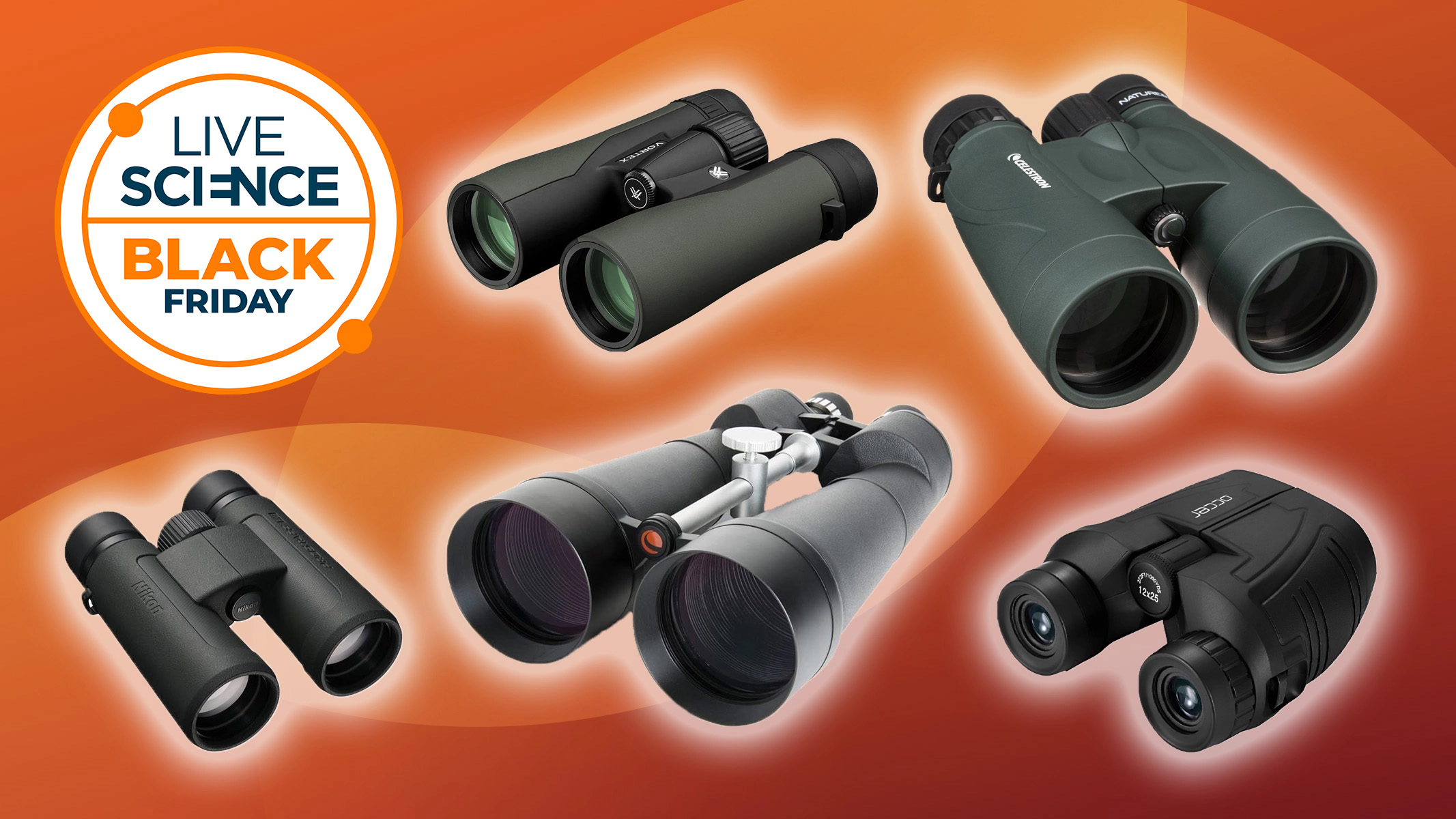Best trail cameras: Capture wildlife photos and videos the easy way
Trail cameras allow you to capture wildlife photos and videos day and night to reveal unseen animal behaviours — check out the best models for Black Friday.
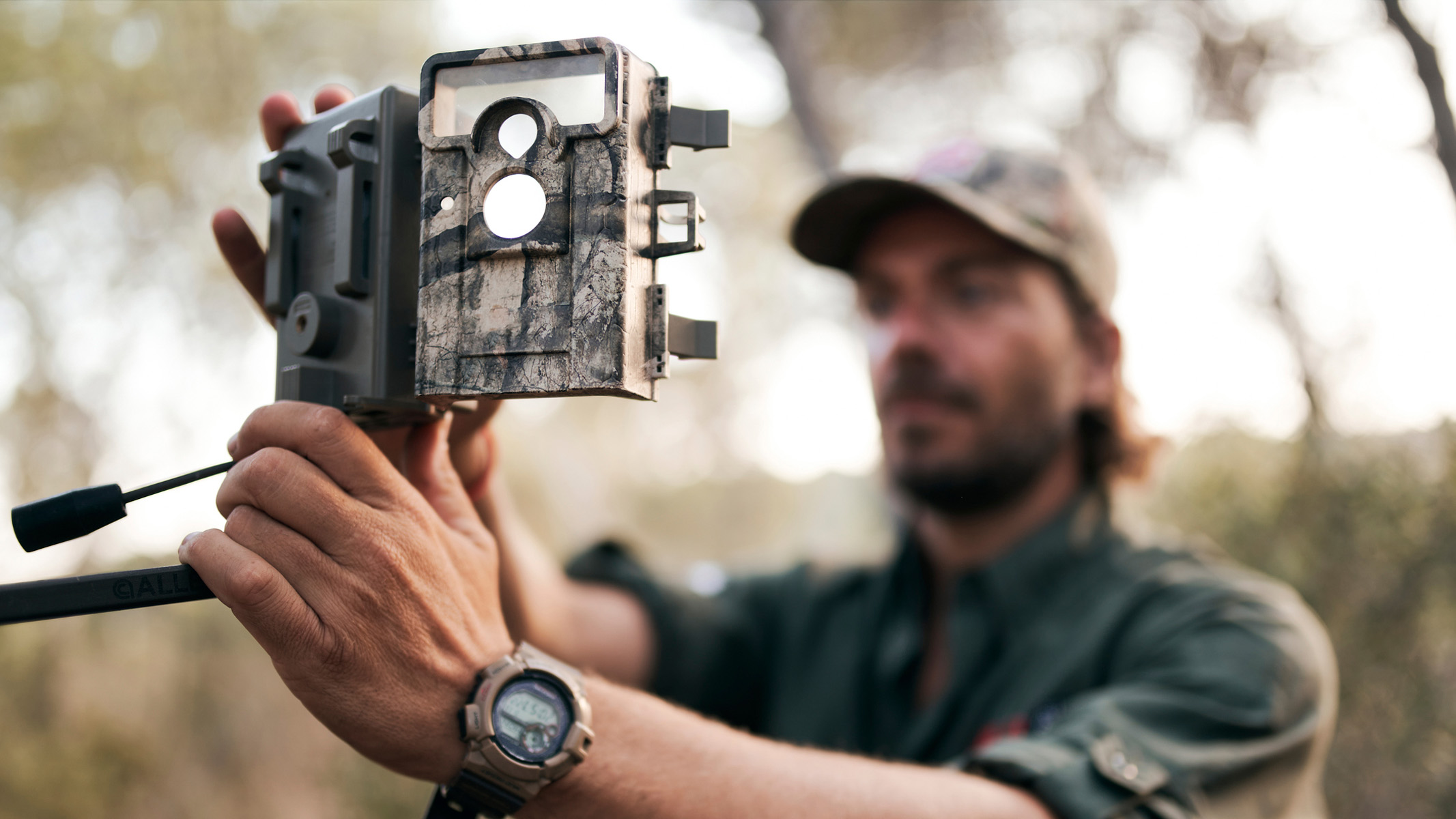
When it comes to capturing high-quality photos and videos of wildlife, nothing beats sitting in a hide with a wildlife camera and a long lens. Unfortunately, this isn’t always possible or practical, especially if you’re tracking wildlife in a specific area. So, to make things easier, the best trail cameras provide an automated window into the world of wildlife.
Trail cameras are weatherproof devices that can be positioned outdoors for extended periods to capture and track wildlife in the countryside or even your backyard. Thanks to motion or heat sensors, the cameras will begin recording in a split second as soon as something is sensed.
Depending on the trail camera you choose, you can retrieve the camera or swap SD cards to view the images captured, while more advanced options offer cellular connectivity for live viewing and remote downloading. Now that Black Friday week is upon us, you could even save some money, too.
The quick list
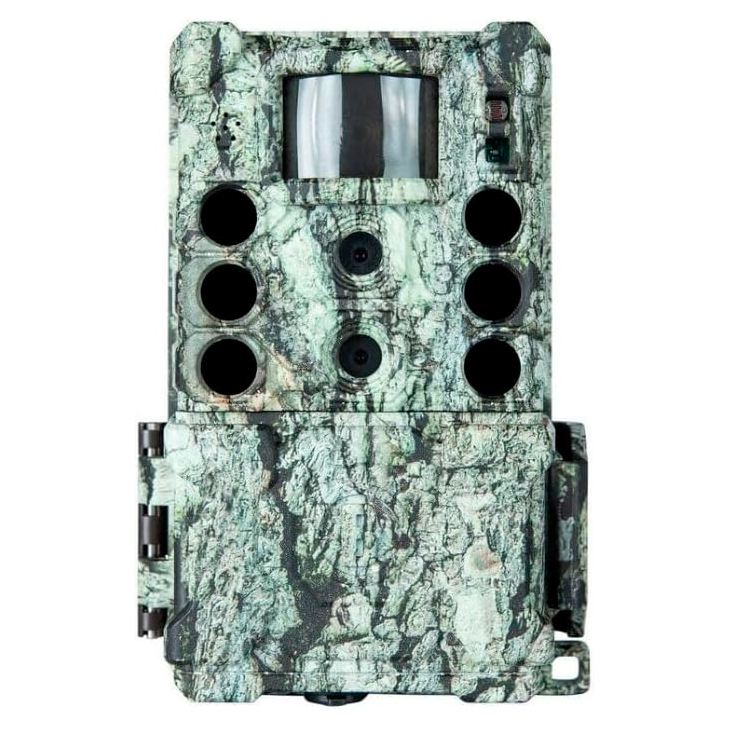
Best 4K
The Bushnell Core DS-4K No Glow is an easy-to-use trail camera that can capture 4K video and 32MP photos. Plus, it has an impressive 120 foot (36 meter) detection range and a fast trigger speed.
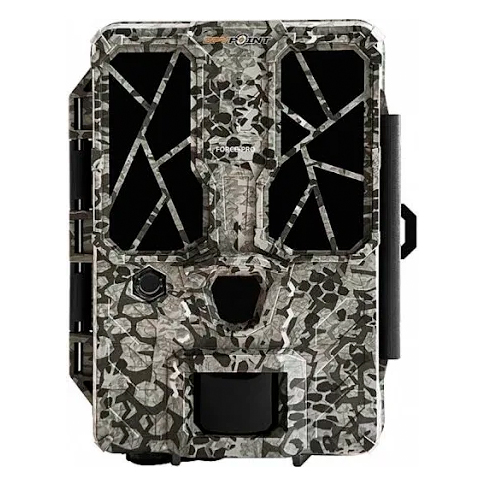
Best day and night
The Spypoint Force-Pro can capture 4K video with sound, and 30MP photos with great day and night capture. Set-up is easy, although the screen for setting up is only black and white.
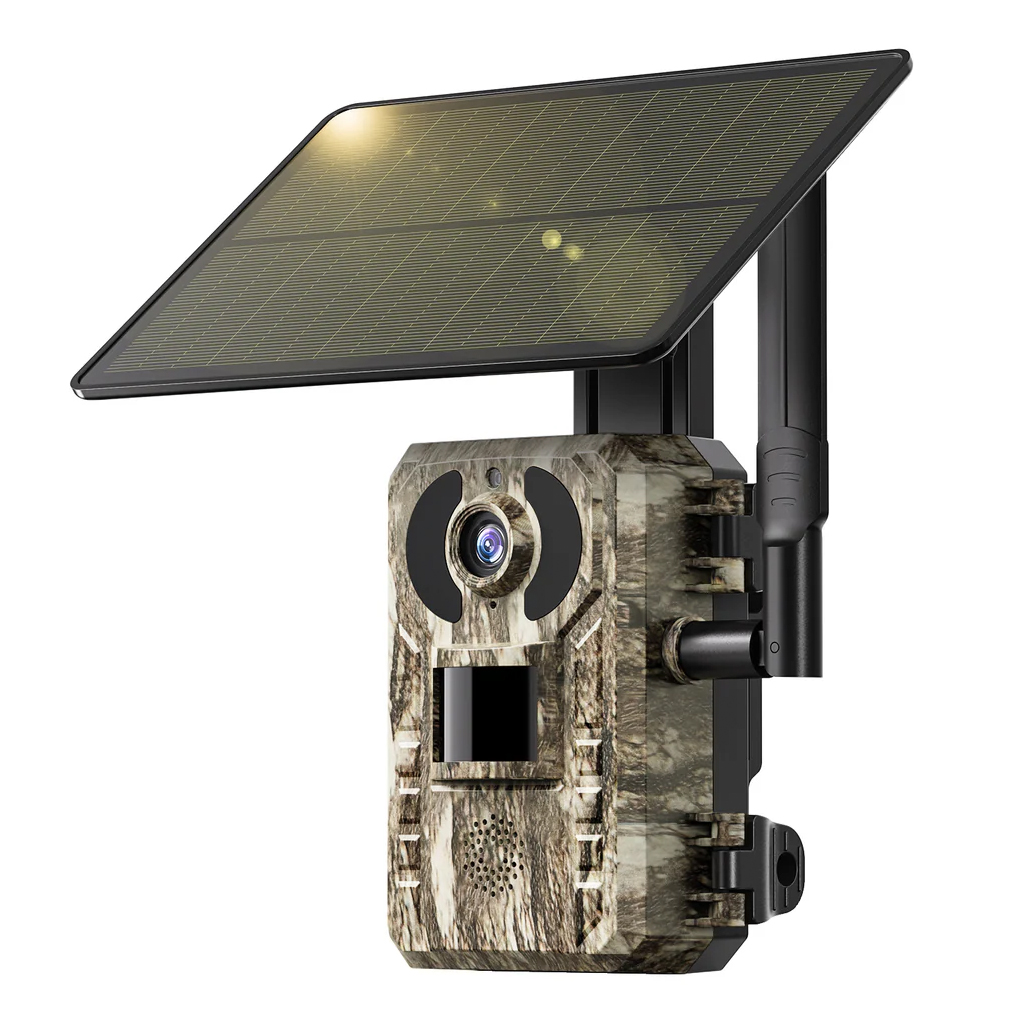
Best solar option
With cloud and SD card storage, alongside live viewing when the installed SIM card is activated, the solar-powered SEHMUA 4G LTE 3rd Gen Cellular is great for isolated locations.
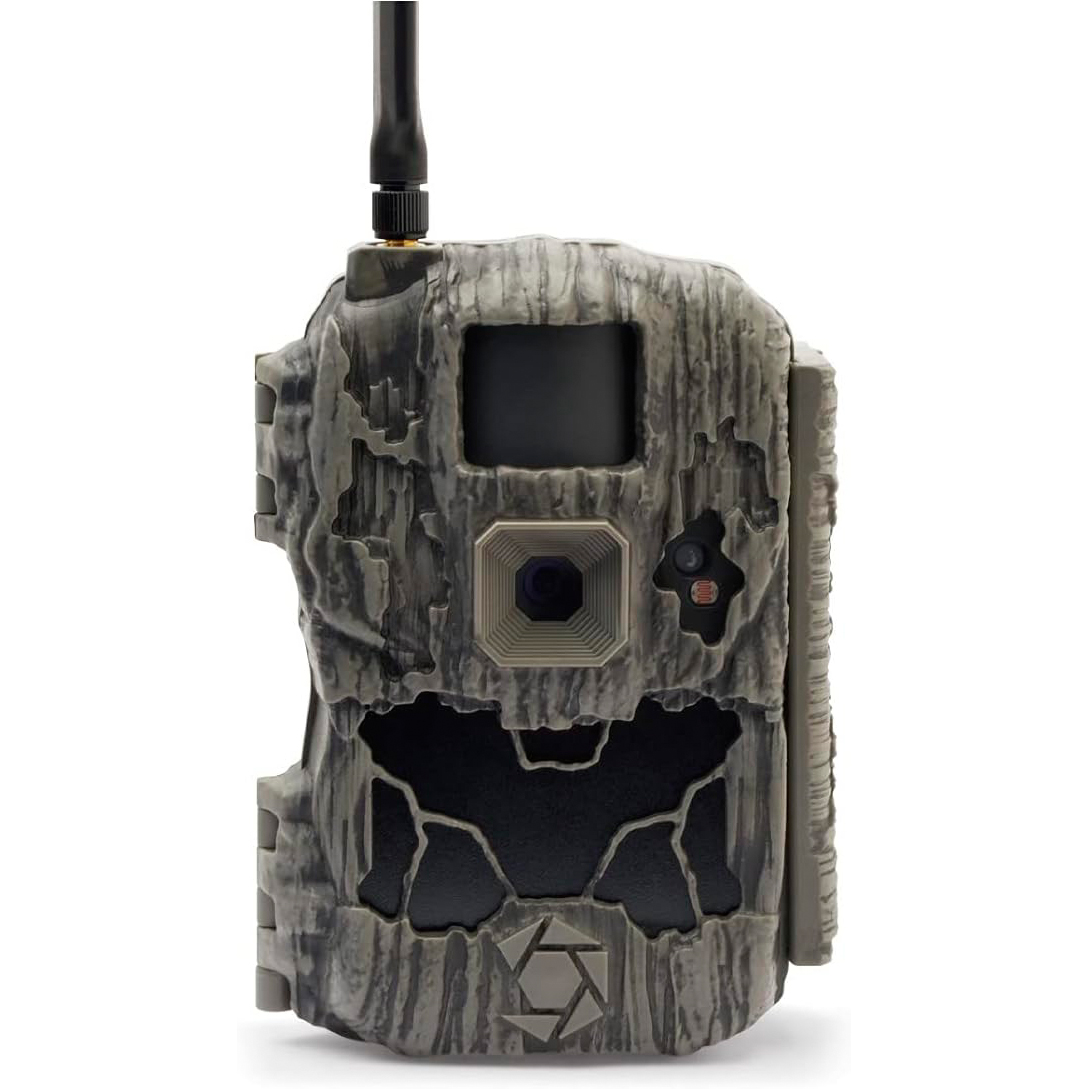
Best cellular
The Stealth Cam DS4K Transmit is automatically covered by Verizon and AT&T networks when paired with a cellular plan for remote viewing. It can also capture to an SD card if one is installed.
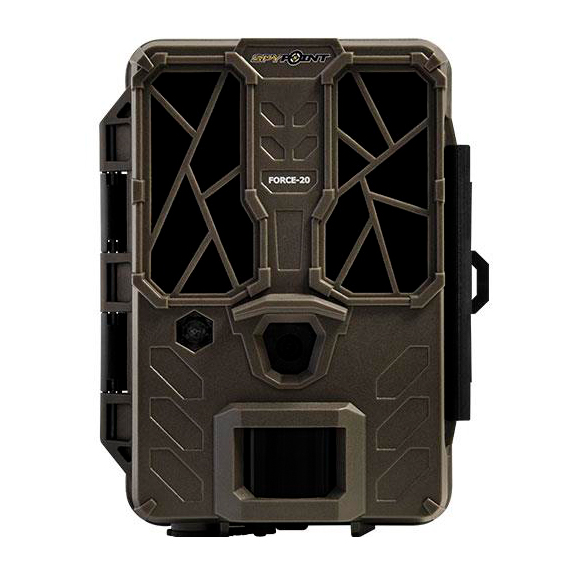
Best budget
Thanks to the Spypoint Force-20, you can still capture 20MP wildlife photos and 720p videos even if you’re on a tight budget. What’s more, it comes with a 16 GB SD card to get you started.
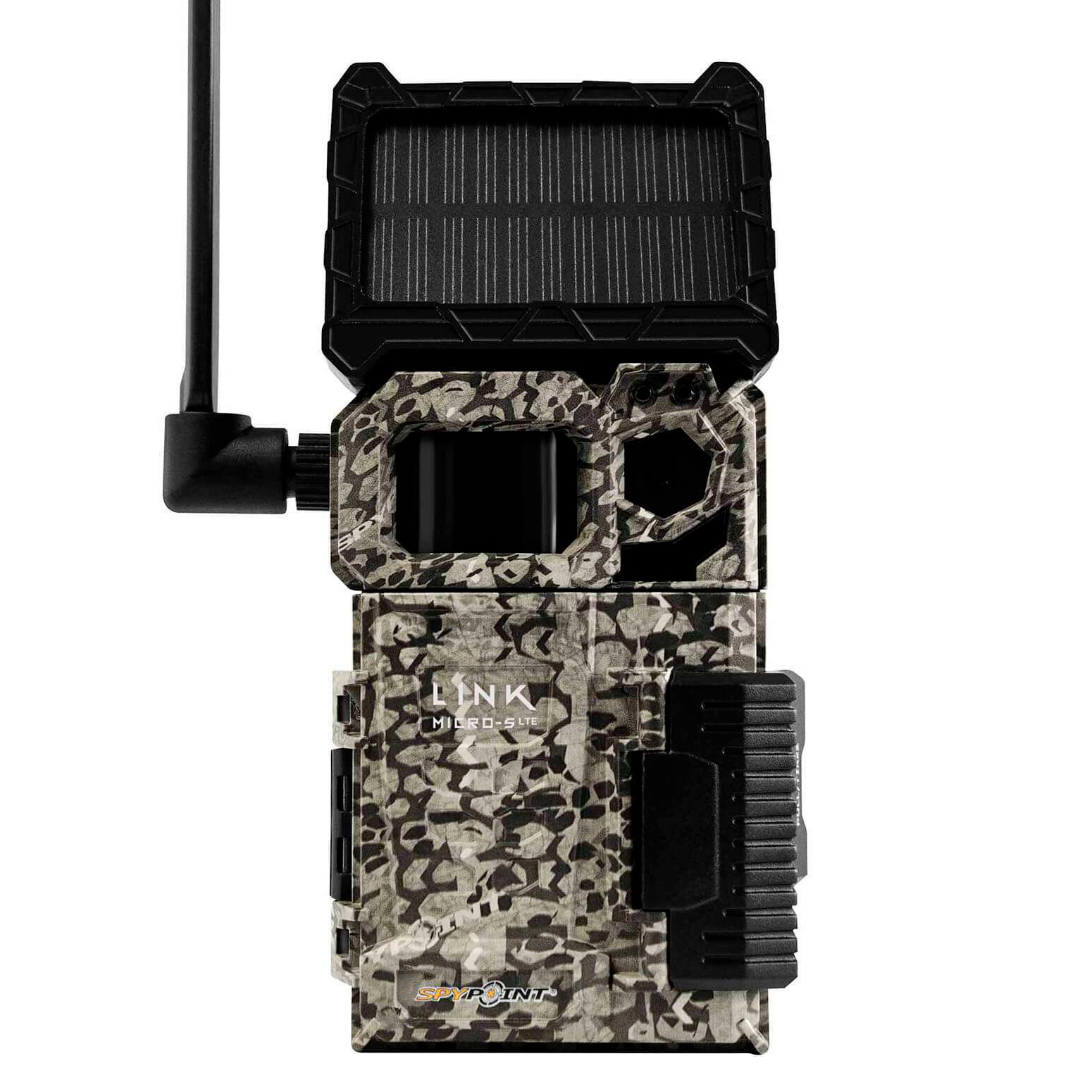
Best compact
With 10MP photos, the Spypoint LINK-MICRO-S-LTE is a simple yet compact cellular trail camera. A solar panel charges the included battery and can keep it going for days or weeks on end.
The best trail cameras we recommend in 2025
Why you can trust Live Science
Best 4K
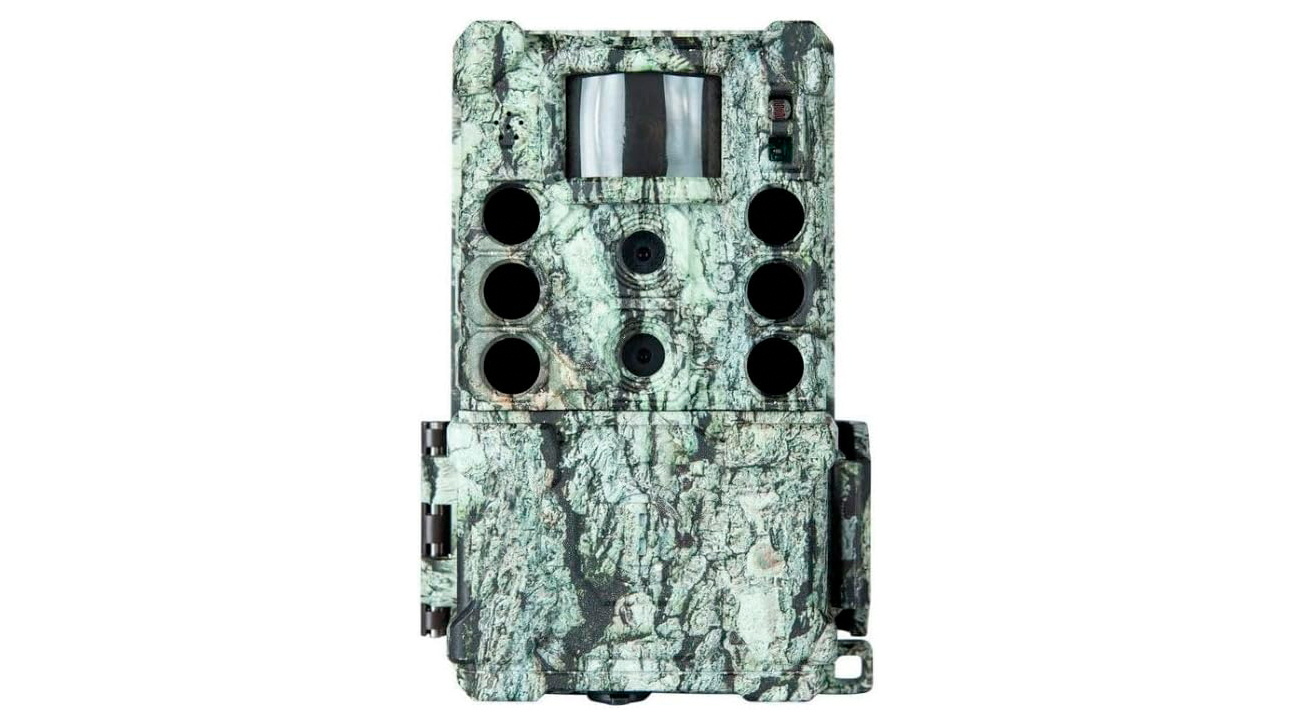
Bushnell Core DS-4K No Glow
Our expert review:
Specifications
Reasons to buy
Reasons to avoid
✅ You’d like up to 4K video: With up to 4K 30 fps video available, you can enjoy high-resolution footage with this trail camera.
✅ You’d like a large detection range: With a detection range of up to 120 feet (36 m), this camera will capture distant movement, making it useful in wider scenes.
❌ You require a live feed: If you’d like to check footage remotely and be alerted when an animal is detected, you’ll need a cellular trail camera.
❌ You’d like solar: Although Bushnell claims a long battery life, a trail camera with a solar panel and rechargeable batteries may provide longer capture durations.
🔎 The Bushnell Core DS-4K No Glow offers a fantastic trigger range alongside up to 4K video capture and 32 MB photos. It’s easy to use, and the battery life is impressive. ★★★★½
The Bushnell Core DS-4K No Glow has a night trigger range of up to 120 feet (36 m), while the trigger speed is just 0.15 seconds. The camera also comes with a two-year warranty, offering reassurance for a device that will be left out in all weather conditions, day and night. The no-glow LEDs and compact design mean it easily goes unnoticed when situated in the wild.
The Core DS-4K No Glow features a standard camouflaged and weatherproof design where a rear flap opens to reveal a 1.5-inch (3.8 centimeter) color screen and controls for adjusting settings. Six AA batteries are inserted into a tray that slots into the bottom of the camera, which Bushnell claims can last up to 12 months.
This is an easy-to-use camera, but with different detection modes, there can be a degree of trial and error when setting up. The camera can be set to capture photos and videos individually, or to shoot both. Image quality is good for a trail camera, but it’s certainly not mirrorless camera image quality. There are, however, sensors specifically for daylight and night capture.
The camera can use up to a 512 MB SD card, which is ideal for a device that captures 4K video and has a long battery life. The PIR sensor has four settings, while there are also four capture presets, with the Advanced option offering greater control.
Attributes | Notes |
|---|---|
Design
| Well made, camouflaged design including a small, color LCD screen. |
Performance
| Good image quality for a trail camera with individual day and night sensors. |
Functionality | Long battery life alongside multiple sensor and capture options. |
Best day and night
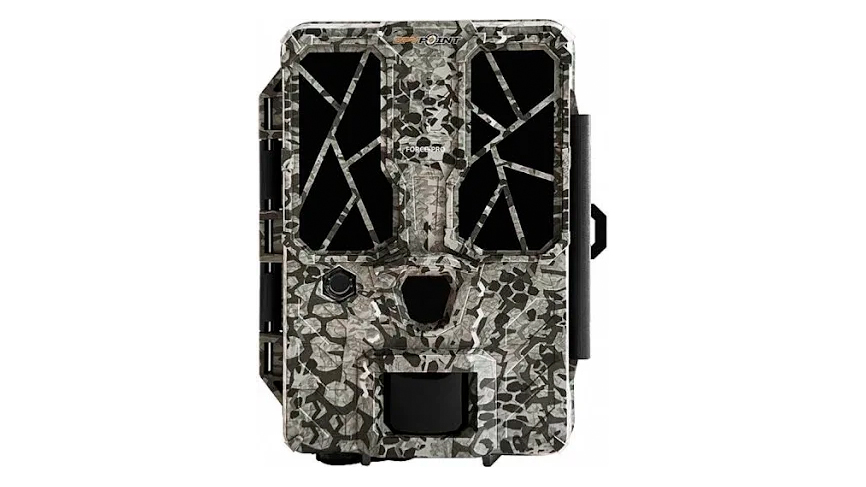
Spypoint Force-Pro
Our expert review:
Specifications
Reasons to buy
Reasons to avoid
✅ You’d like excellent day and night capture: The Spypoint Force-Pro captures in color during the day and classic black and white at night.
✅ You’d like sound: When capturing videos up to 60 seconds in duration, this trail camera can also capture sound to add an extra dimension to footage.
❌ You’d like solar power: If you’d like a solar-powered trail camera to charge batteries in the field, this isn’t the camera for you.
❌ You’d like a color screen: While having a black and white LCD screen doesn’t affect overall performance, you may prefer a color screen for adjusting settings.
🔎 The Spypoint Force-Pro captures great day and night photos and videos at a high resolution. The LCD screen and controls may be basic, but this keeps things simple and has no negative impact on overall performance. ★★★★
The Spypoint Force-Pro is a compact trail camera offering great day and night photo and video capture. It offers a standard design as well as simple setup and operation. However, you have to be careful with the detection sensitivity to avoid capturing foliage movement. This is the same for all trail cameras, though, so it’s not really an issue.
The build quality of the camera is good, with weather resistance as you’d expect. This is a compact trail camera that opens up along one edge to reveal simple controls, a 1.5-inch (3.8 cm) black and white LCD screen on one side and a battery compartment on the other. The overall design is also camouflaged to help it blend into its environment.
The Spypoint Force-Pro can capture up to 4K videos and 30MP photos, which switch automatically between color in the day and black and white at night. Up to six photos can be captured in a burst, while video clips can be set to 10, 20, 30 and 60 seconds. Plus, sound can be captured, which will be useful to some.
This camera can also capture time-lapse videos and be powered by an external DC 12 V power source. This is an alternative to standard power via eight AA batteries. The LED flash range is up to 90 feet (27.4 m), while the detection range is 110 feet (33.5 m) and the trigger speed is 0.2 seconds.
Attributes | Notes |
|---|---|
Design
| Standard weatherproof design but in a compact form. |
Performance | Great day and night photo and video capture. |
Functionality | Several capture modes and two power options. |
Best solar option
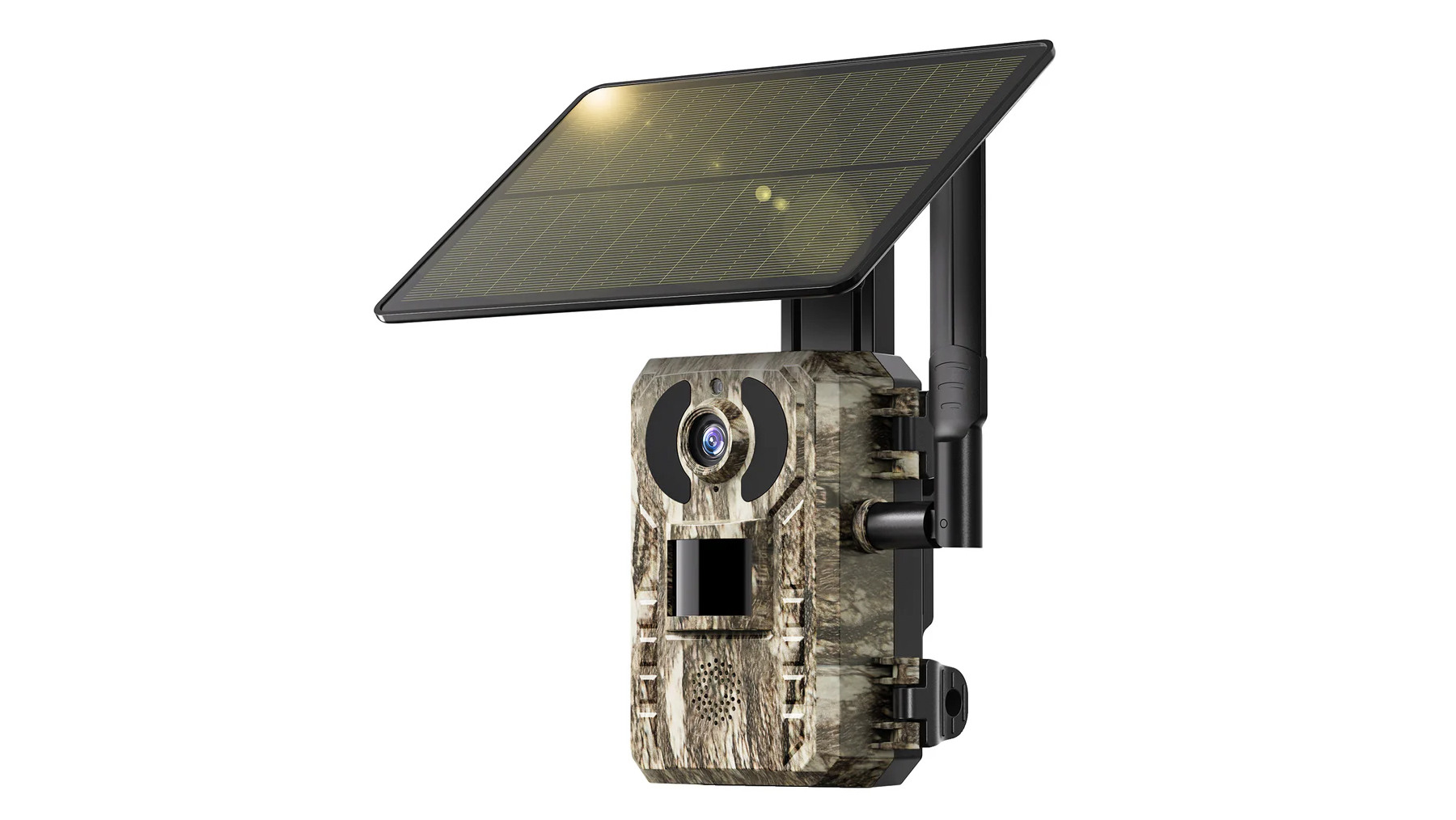
SEHMUA 4G LTE 3rd Gen Cellular
Our expert review:
Specifications
Reasons to buy
Reasons to avoid
✅ You need remote location monitoring: With its built-in battery and 4 W solar panel, this trail camera will keep running in bright and sunny locations.
✅ You’d like live access to captures: The camera comes with a 4G prepay SIM included which supports the Verizon, T-Mobile and AT&T networks.
❌ You live in a less sunny region: This trail camera requires plenty of juice from the sun to keep the battery charged, so the solar panel needs to get a lot of direct sunlight.
❌ You’d like a higher resolution: It’s far from the highest resolution available.
🔎 The SEHMUA 4G LTE 3rd Gen is a great option for remote locations thanks to solar power and cellular connectivity. The capture resolution isn’t the highest, but the aforementioned features are what make this model stand out. ★★★★
The SEHMUA 4G LTE 3rd Gen is a trail camera designed for remote use thanks to its cellular connectivity and built-in battery and solar panel. The capture resolution of the camera isn’t the highest you’ll come across, but the emphasis of this camera is firmly on reliable remote operation.
This camera follows a typical camouflaged design but with a 4 W solar panel on the top and a cellular antenna on the side. Weather resistance is IP66, which is excellent. Set-up, control and viewing of footage is achieved via the app, although there is a cloud storage option (at a cost) alongside a cellular plan and the ability to install an SD card.
Image quality is good, despite photo and video capture being what you might call medium resolution. Video can be set to capture 5, 10, 20 and 30-second durations, although you can’t simultaneously capture photos and videos — you have to choose one or the other. Another option is, of course, to capture video and then take 2K stills from it in video-editing software.
App control is useful, although it’s not the most intuitive app. That said, having a live feed available thanks to a cellular connection is useful. There are sensitivity options for triggering, and a flip mode that rotates the image if the camera is installed upside down. As you’d expect, color photos and videos are captured in daylight while they’re black and white at night.
Attributes | Notes |
|---|---|
Design
| Tough camouflaged build with a 4W solar panel. |
Performance | Excellent image quality but video tops out at 2K. |
Functionality | Cellular connection, solar panel and built-in battery. |
Best cellular
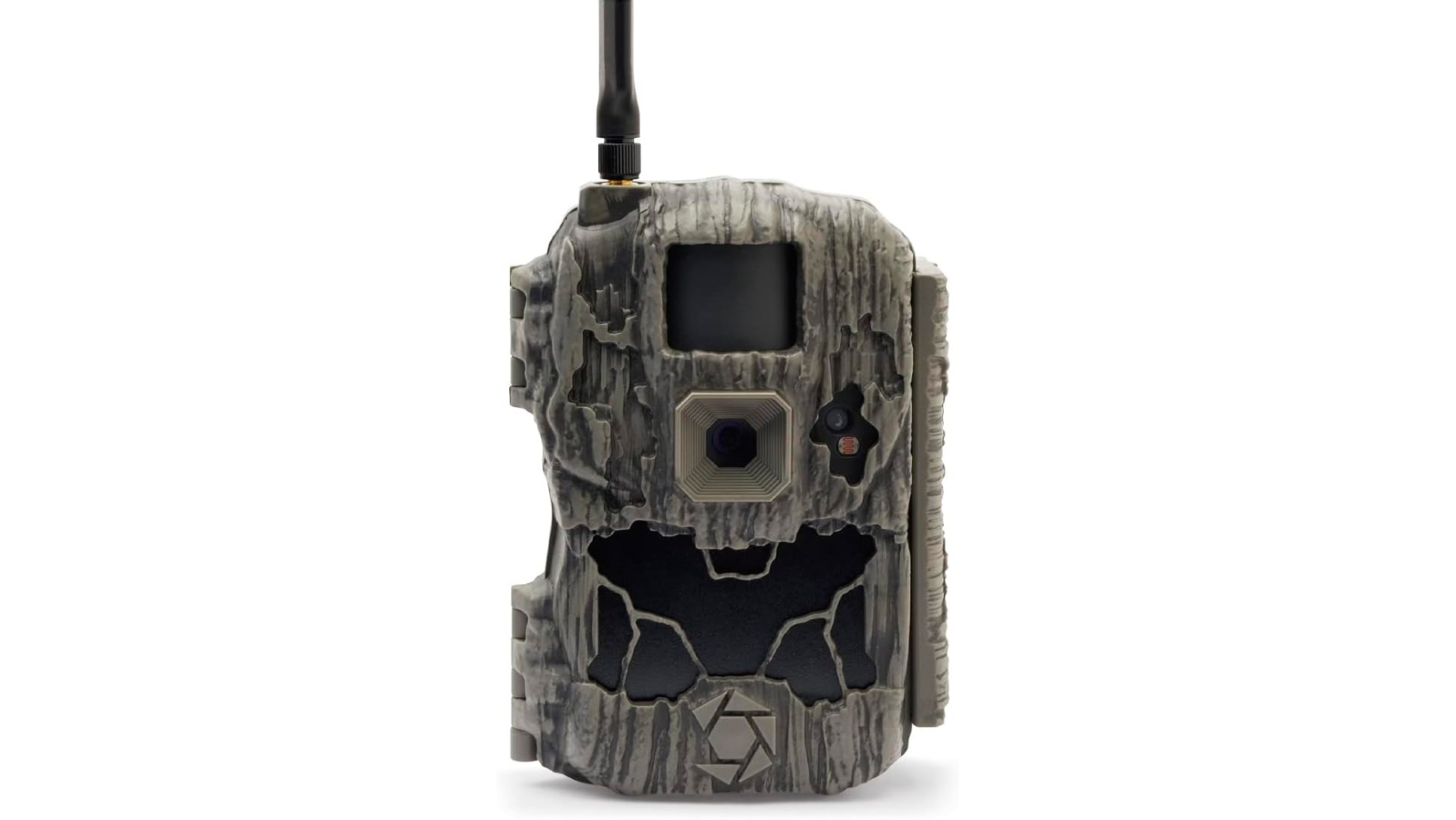
Stealth Cam DS4K Transmit
Our expert review:
Specifications
Reasons to buy
Reasons to avoid
✅ You require remote control and image access: With cellular connectivity and an affordable subscription, you can access the camera's images and controls remotely.
✅ You’d like 4K video capture: The DS4K Transmit can capture 4K video and record it to the installed SD card, but app downloads are only 720p.
❌ You don’t require cellular connectivity: Many people don’t need or want remote connectivity, so you could save cash with a standard trail camera.
❌ You’d prefer a compact camera: While this trail camera isn’t huge, it’s twice the depth of some of the alternatives, making it quite chunky.
🔎 The Stealth Cam DS4K Transmit is a great blend of cellular connectivity, control and viewing, alongside high-resolution photo and video capture. Build quality is robust although the overall design is chunkier than many alternatives. ★★★★½
The Stealth Cam DS4K Transmit is a trail camera that ticks many boxes and provides fantastic cellular connectivity, app-based control and image viewing for those who need it. It’s easy to use and the app provides many filtering options for footage, including species, allowing users to easily identify behavioral patterns.
The camera offers a simple yet robust and camouflaged design where the body opens along the long edge to reveal the controls, a basic screen and the battery compartment. It requires a whopping 12 AA batteries, although you can purchase a solar panel/battery pack separately if you’d like to leave the camera on location for longer.
Image quality is great for a trail camera, with up to 4K 30fps footage and 32MP photos available when saved to the SD card, although app downloads are limited to 720p. Audio can also be captured. Up to three photos can be captured per trigger, while the trigger time is a fast 0.2 seconds up to a range of 100 feet (30.5 m).
This camera features GPS for locating the device, which is incredibly useful in the case of loss or theft. Controls on the camera allow for set-up, although the Command Pro app provides remote access to both control and image viewing and downloading. Network coverage is available with Verizon or AT&T.
Attributes | Notes |
|---|---|
Design | Robust yet chunky camouflaged design. |
Performance | Great image quality, saved to SD card. |
Functionality | GPS, cellular connectivity and high-resolution capture. |
Best budget

Spypoint Force-20
Our expert review:
Specifications
Reasons to buy
Reasons to avoid
✅ You’re on a budget: You don’t have to spend a fortune for a camera that does the job it’s designed for, as proven by the Spypoint Force-20.
✅ You plan to capture in your garden: This beginner model is ideal for simple garden captures as well as for placement in other locations.
❌ You require high-resolution: With video topping out at 720p, you’ll have to choose a more expensive trail camera to enjoy a higher resolution.
❌ You’d like remote access: For remote access to a trail camera, you’ll need a model with cellular or Wi-Fi connectivity.
🔎 The Spypoint Force-20 is a budget model that can get the job done without breaking the bank. It’s slower and less responsive than higher-end models, but it’s a great option to get you started in capturing and tracking wildlife. ★★★★
The Spypoint Force-20 allows you to capture 20MP wildlife photos and 720p videos, even if you’re on a very limited budget. What’s more, it’s much less expensive than other Spypoint trail cameras and comes with a 16 GB SD card to get you started. The camera runs on eight AA batteries, while a 12 V connector provides the ability to use external power sources.
You’d never really know the Force-20 was a budget model just from looking at it. It offers a compact, dark green design rather than camouflage, although this still fits in with the natural environment well. The device opens up to reveal a 1.5-inch (3.8 cm) black and white LCD screen and illuminated controls, with the battery compartment on the other side.
Photos and videos captured by the camera are clear despite the low resolution of the videos. Video capture is limited to just 720P despite the 20MP sensor and photos. Photos and videos are captured in color during daylight, which switches to black and white at night.
All the functionality you’d expect is there, although speed and performance take a slight hit with this being a budget model. We’ve already covered the video resolution, but the detection range is also shorter than most other options at just 69 feet (21 m), while the trigger speed is over half a second slower than the fastest model at 0.7 sec. There is, however, time-lapse functionality.
Attributes | Notes |
|---|---|
Design
| Plain green body with a tough weatherproof design. |
Performance
| Clear images despite the low 720p video. |
Functionality
| Works well, with all the features you’d expect but reduced performance. |
Best compact
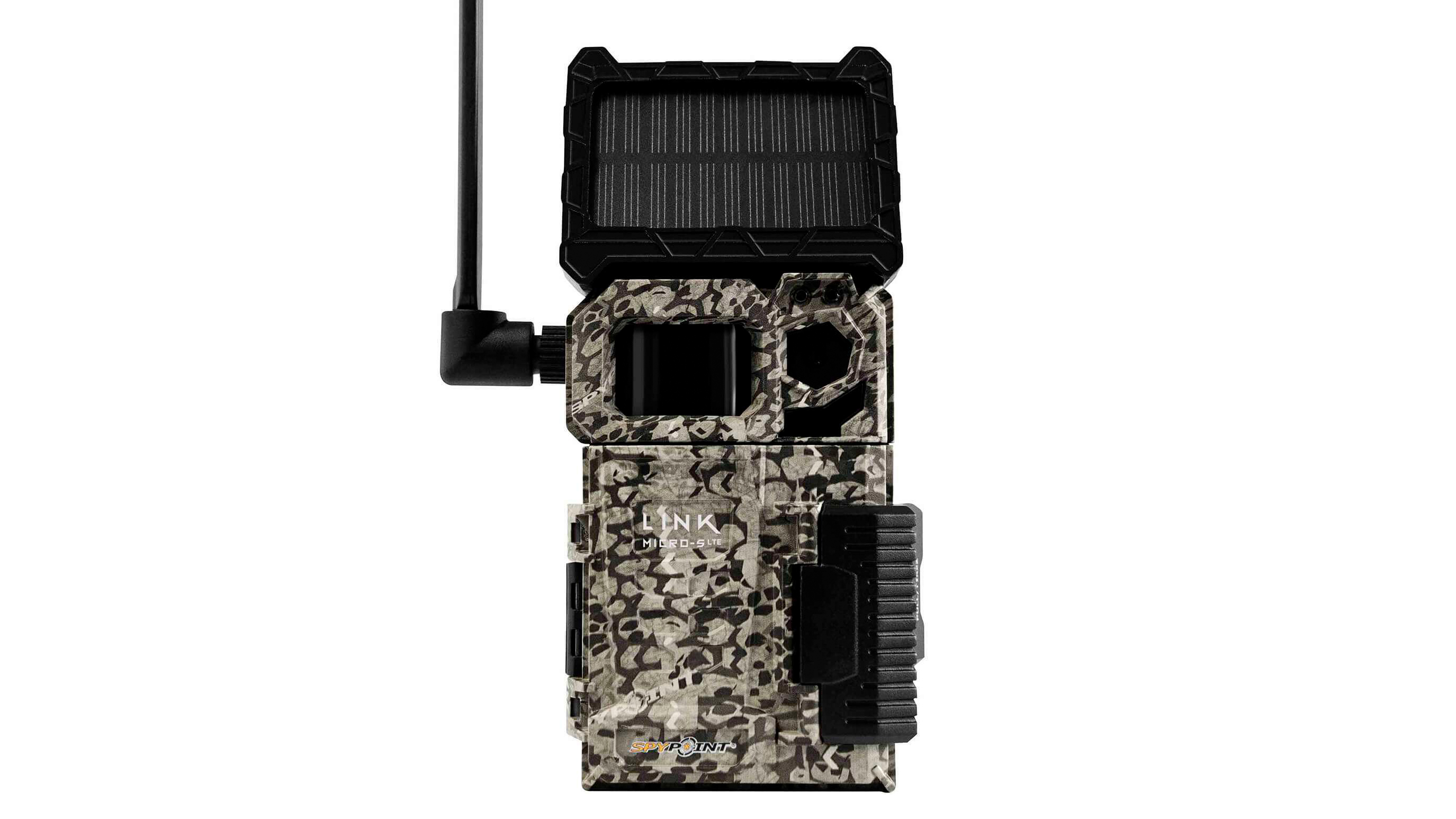
Spypoint LINK-MICRO-S-LTE
Our expert review:
Specifications
Reasons to buy
Reasons to avoid
✅ You only require photos: If photo capture is all you’re looking for, this could be the perfect trail camera for you.
✅ You need remote access: With cellular access and 100 images on the free account, you can enjoy remote access with more photos available with a paid subscription.
❌ You’d like to capture video: With no video capture available, this camera will appeal to a niche audience looking for simplicity.
❌ You’d like high-res remote images: Images transmitted to the app or your account via a web browser are limited to 600 x 388px.
🔎 The Spypoint LINK-MICRO-S-LTE is a simple yet compact cellular trail camera with only 10MP photo capture and no video. A solar panel charges the included battery, providing great potential for long periods, with cellular connection available. ★★★★
The Spypoint LINK-MICRO-S-LTE has many great features if you’re looking for a simple photo-only trail camera. Photos are captured at 10MP and are saved to an SD card, while much lower-resolution photos can be viewed in the Skypoint app or via your Skypoint account in a web browser.
This trail camera looks like most others with its camouflaged and weatherproof exterior. It’s also compact and lightweight despite the small solar panel at the top of the device which charges the included LIT-10 battery pack. As you’d expect for a cellular trail camera, there’s also an antenna on the side. There are, however, no LCD screen or controls on the camera, which helps to keep the size down. Settings are controlled within the Skypoint app.
Photos saved to the SD card are captured at 4,096 x 3,204px, while images transmitted to the app or browser are a paltry 600 x 388px. This is a huge limitation and a deal-breaker if you require video, but it will work for people looking for a simple photo-only solution. Photos are captured in color during daylight hours and in black and white when it’s dark.
Thanks to the battery pack and built-in solar panel, this trail camera can keep itself going for some time. Couple this with the cellular connection, where there are free and paid account options, and you can enjoy camera access when installed in a remote location. There is also a 12 V connection for attaching an external power supply if required.
Attributes | Notes |
|---|---|
Design | Tough, compact and lightweight with a small solar panel. |
Performance: | Simple photo-only capture and no video. |
Functionality | Remote access via cellular networks and the Skypoint app. |
Best trail cameras: Comparison
| Row 0 - Cell 0 | Resolution | Video | Detection range | Trigger speed | Batteries |
Bushnell Core DS-4K No Glow | 32MP | Up to 4K 30 fps | 120 feet (36 meters) | 0.15 sec | 6 x AA |
Spypoint Force-Pro | 30MP | Up to 4K 30 fps | 110 feet (33.5 m) | 0.2 sec | 8 x AA |
SEHMUA 4G LTE 3rd Gen Cellular | 3.7MP | 2K | N/A | 0.2 sec | Built-in 7800mAh |
Stealth Cam DS4K Transmit | 32MP | Up to 4K 30 fps | 100 feet (30.5 m) | 0.2 sec | 12 x AA |
Spypoint Force-20 | 20MP | 720p | 69 feet (21 m) | 0.7 sec | 8 x AA |
Spypoint LINK-MICRO-S-LTE | 10MP | N/A | 78.5 feet (24 m) | 0.4 sec | Solar panel and LIT-10 battery pack |
Best trail cameras: Frequently Asked Questions
Can trail cameras capture photos and videos?
Most trail cameras can capture both photos and videos, but you typically have to choose one over the other when setting up the camera. Some cameras, however, can capture both photos and videos at the same time.
The resolution of both photos and videos varies between models, with some cameras, for example, only being able to capture 720p video while others can capture 4K.
What does 'no-glow' mean?
No-glow trail cameras are those that use 940 nm infrared LEDs that don’t emit visible light and are sometimes referred to as black flash. The alternative is low-glow, which emits a small amount of visible light from 850 nm infrared LEDs. This frequency of light travels further, so slightly more distant animals will be illuminated. No-glow might be a better option if you plan to use your trail camera in busy locations where people might be alerted to the presence of the camera, while low-glow could be better elsewhere.
What's the difference between a cellular trail camera and a Wi-Fi trail camera?
A cellular trail camera utilizes mobile networks for signal and transmission, whereas a Wi-Fi trail camera uses nearby internet routers and are commonly used in gardens and backyards.
Should I buy a cellular trail camera?
A cellular trail camera is a great option if you want to receive real-time notifications and plan to view live footage. This can also be ideal if your camera is positioned in a remote location or you have several cameras set up in different locations.
The downside to these cameras is that you need to have network coverage, and there is typically a requirement for a SIM card with a subscription, depending on the trail camera model.
Do you have to pay a monthly fee for a cellular trail camera?
In a similar way to how your cellphone works, you have to register your trail camera with a SIM card in order to connect to mobile networks so you can transmit images and video from the camera to your phone. You can either choose a prepaid SIM card or a data plan contract.
What are the power options?
Most trail cameras are powered by AA batteries and use quite a few of them. The lifespan of the batteries will depend on the trail camera itself and the number of times it’s triggered.
Another option is to choose a camera that has a solar panel alongside battery power. In this situation, the camera can have rechargeable batteries installed which are then charged by the solar panel during daylight to extend operating times. Most cameras also have a 12 V input for external power.
Are budget models available?
Like all electronics, there are cheaper and more expensive trail cameras available. The advantage of budget models is that they’re inexpensive and make capturing wildlife photos and videos accessible to many people. On the flip side, you’re likely to experience limitations when it comes to video resolution and features in general.
This isn’t to say budget trail cameras aren't worthwhile, because no trail camera will produce image quality as good as mirrorless cameras paired with the best lenses, but they are much more covert and convenient.
How do I view pictures on my trail camera?
If you own a cellular or Wi-Fi trail camera, you can transfer the images or video straight to your mobile device to view. Otherwise, you can connect the SD card from the trail camera to your computer to view the images and footage the trail camera has stored in its internal memory.
Can you watch a trail camera live on your phone?
Most wireless or cellular trail cameras have the ability to send photos and videos directly to your phone via an accompanying app. You can allow the app to send you a notification when something triggers the camera.
What is the lifespan of a trail camera?
The life expectancy of a trail camera varies between brands, but you can typically expect a lifespan of anywhere between 3-6 years. They are durable cameras that are specifically designed to withstand hard conditions all year round in outdoor environments.
How we tested the best trail cameras
How we test the best trail cameras
Trail cameras are tested by our expert staff and freelance contributors who have a wealth of photography and video knowledge and experience. Every trail camera test follows strict real-world testing, where every feature and all functions are tested to assess overall performance and usability.
Cameras are tested in photo and video modes to assess image quality. These are captured in daylight and at night to see how well the cameras perform in all lighting conditions. Cameras are also left in situ for as long as possible to test battery longevity, and/or the performance of the built-in solar panel when applicable.
With complete editorial independence, Live Science is here to ensure you get the best buying advice on camera lenses, whether you should purchase one or not, making our buying guides and reviews reliable and transparent.
Get the world’s most fascinating discoveries delivered straight to your inbox.
James is an award-winning freelance landscape and portrait photographer, as well as a highly experienced photography journalist working with some of the best photography magazines and websites with a worldwide audience. He’s also the author of The Digital Darkroom: The Definitive Guide to Photo Editing. www.jamesaphoto.co.uk
